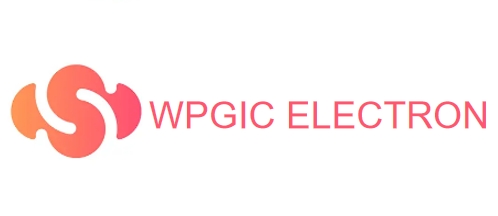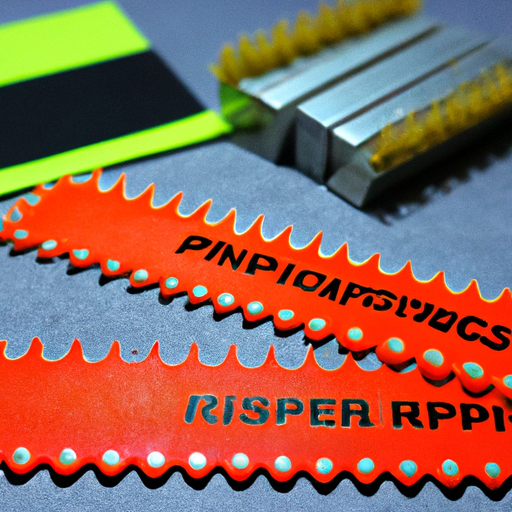What Industries Are the Application Scenarios of Photoresistors Included?
I. Introduction
In the realm of electronics and technology, photoresistors, also known as light-dependent resistors (LDRs), play a pivotal role in various applications. These components are semiconductor devices that change their resistance based on the amount of light they are exposed to. As light levels increase, the resistance of the photoresistor decreases, allowing more current to flow through the circuit. This unique property makes photoresistors invaluable in a multitude of industries, from consumer electronics to renewable energy. In this article, we will explore the fundamental principles of photoresistors, their key characteristics, and the diverse industries that utilize them.
II. Understanding Photoresistors
A. Basic Principles of Photoresistors
Photoresistors operate on the principle of photoconductivity, where the electrical conductivity of a material changes in response to light exposure. When photons hit the semiconductor material, they excite electrons, allowing them to move freely and conduct electricity. The most common type of photoresistor is the LDR, which is made from cadmium sulfide (CdS) or similar materials.
1. How They Work
The operation of a photoresistor is straightforward: in darkness, the resistance is high, and minimal current flows. As light falls on the device, the resistance drops, leading to an increase in current. This property is harnessed in various applications, allowing devices to respond dynamically to changes in ambient light.
2. Types of Photoresistors
While LDRs are the most widely recognized, there are other types of photoresistors, including photoconductive cells and phototransistors. Each type has its specific applications and characteristics, but they all share the fundamental principle of light sensitivity.
B. Key Characteristics and Specifications
Understanding the key characteristics of photoresistors is essential for their effective application in different industries.
1. Sensitivity
Sensitivity refers to how effectively a photoresistor can detect changes in light levels. High sensitivity is crucial for applications requiring precise light measurement, such as in automatic lighting systems.
2. Response Time
The response time of a photoresistor is the duration it takes to react to changes in light intensity. Faster response times are essential in applications like safety systems, where immediate reactions to light changes can prevent accidents.
3. Temperature Dependence
Photoresistors can be affected by temperature changes, which can alter their resistance and performance. Understanding this characteristic is vital for applications in environments with fluctuating temperatures.
III. Major Industries Utilizing Photoresistors
Photoresistors find applications across a wide range of industries, each leveraging their unique properties to enhance functionality and efficiency.
A. Consumer Electronics
In the consumer electronics sector, photoresistors are ubiquitous. They are commonly used in smartphones and tablets to adjust screen brightness based on ambient light conditions, enhancing user experience and conserving battery life. Additionally, photoresistors are integral to cameras, where they help in automatic exposure control, ensuring optimal image quality in varying lighting conditions.
B. Automotive Industry
The automotive industry has embraced photoresistors for their ability to enhance safety and convenience. Automatic lighting systems in vehicles utilize photoresistors to detect ambient light levels, automatically turning headlights on or off as needed. Furthermore, they are integrated into adaptive headlights, which adjust the direction and intensity of light based on the vehicle's speed and steering angle, improving visibility during night driving.
C. Renewable Energy
In the renewable energy sector, photoresistors play a crucial role in optimizing solar energy collection. They are used in solar panels to track sunlight, ensuring that the panels are always oriented towards the sun for maximum energy absorption. Additionally, photoresistors are employed in solar-powered devices, enabling them to operate efficiently in varying light conditions.
D. Home Automation and Smart Homes
The rise of smart home technology has led to increased use of photoresistors in home automation systems. They are integrated into smart lighting systems, allowing lights to automatically adjust based on the time of day or ambient light levels. Moreover, photoresistors are utilized in security systems and alarms, detecting changes in light that may indicate unauthorized entry or other security breaches.
E. Industrial Automation
In industrial settings, photoresistors are employed in various applications, including manufacturing processes and quality control systems. They can monitor light levels in production lines, ensuring optimal conditions for processes that require specific lighting. Additionally, photoresistors are used in monitoring systems to detect changes in light that may indicate equipment malfunctions or product defects.
F. Medical Devices
The medical industry also benefits from the use of photoresistors. They are integral to diagnostic equipment, where they help measure light levels in various tests. Furthermore, photoresistors are used in patient monitoring systems, where they can detect changes in light that may indicate a patient's condition or response to treatment.
G. Environmental Monitoring
Photoresistors are essential in environmental monitoring applications. They are used in weather stations to measure light levels, contributing to data collection for climate studies. Additionally, photoresistors can be employed in pollution detection systems, where they help monitor light levels in relation to air quality and environmental health.
IV. Emerging Trends and Innovations
As technology advances, so do the capabilities and applications of photoresistors.
A. Advances in Photoresistor Technology
Recent developments in materials science have led to the creation of more sensitive photoresistors. Innovations in nanotechnology and organic materials are paving the way for devices that can detect even the slightest changes in light levels, expanding their potential applications.
1. Development of More Sensitive Materials
Researchers are exploring new materials that enhance the sensitivity and response time of photoresistors. These advancements could lead to more efficient devices in various applications, from consumer electronics to industrial automation.
2. Integration with IoT and Smart Technologies
The integration of photoresistors with Internet of Things (IoT) technologies is another emerging trend. Smart devices equipped with photoresistors can communicate with each other, allowing for more sophisticated automation and control systems in homes and industries.
B. Future Applications and Potential Markets
The future of photoresistor applications looks promising, with several potential markets on the horizon.
1. Growth in Smart City Initiatives
As cities become smarter, the demand for efficient lighting and environmental monitoring systems will increase. Photoresistors will play a crucial role in these initiatives, helping to optimize energy use and improve urban living conditions.
2. Expansion in Wearable Technology
The wearable technology market is also poised for growth, with photoresistors being integrated into devices that monitor light exposure for health and wellness purposes. This could lead to innovations in fitness trackers and health monitoring systems.
V. Challenges and Limitations
Despite their numerous advantages, photoresistors face several challenges and limitations.
A. Sensitivity to Environmental Factors
Photoresistors can be sensitive to environmental factors such as temperature and humidity, which can affect their performance. This sensitivity can limit their effectiveness in certain applications, particularly in extreme conditions.
B. Limitations in Performance Under Extreme Conditions
In environments with extreme lighting conditions, such as direct sunlight or complete darkness, photoresistors may struggle to provide accurate readings. This limitation necessitates the use of alternative technologies in some applications.
C. Competition with Alternative Technologies
Photoresistors face competition from alternative technologies, such as photodiodes and phototransistors, which may offer better performance in specific applications. As technology continues to evolve, the market for light-sensing devices will likely become more competitive.
VI. Conclusion
In conclusion, photoresistors are integral components across various industries, providing essential functionality in consumer electronics, automotive systems, renewable energy, home automation, industrial applications, medical devices, and environmental monitoring. Their ability to respond to changes in light levels makes them invaluable in enhancing efficiency and safety in numerous applications. As technology advances, the future of photoresistor applications looks bright, with emerging trends and innovations paving the way for new possibilities. Despite facing challenges and competition, photoresistors will continue to play a significant role in technological advancement, contributing to a more connected and efficient world.
VII. References
A comprehensive list of academic papers, articles, and resources for further reading would typically follow here, providing readers with additional information and insights into the topic of photoresistors and their applications across various industries.
What Industries Are the Application Scenarios of Photoresistors Included?
I. Introduction
In the realm of electronics and technology, photoresistors, also known as light-dependent resistors (LDRs), play a pivotal role in various applications. These components are semiconductor devices that change their resistance based on the amount of light they are exposed to. As light levels increase, the resistance of the photoresistor decreases, allowing more current to flow through the circuit. This unique property makes photoresistors invaluable in a multitude of industries, from consumer electronics to renewable energy. In this article, we will explore the fundamental principles of photoresistors, their key characteristics, and the diverse industries that utilize them.
II. Understanding Photoresistors
A. Basic Principles of Photoresistors
Photoresistors operate on the principle of photoconductivity, where the electrical conductivity of a material changes in response to light exposure. When photons hit the semiconductor material, they excite electrons, allowing them to move freely and conduct electricity. The most common type of photoresistor is the LDR, which is made from cadmium sulfide (CdS) or similar materials.
1. How They Work
The operation of a photoresistor is straightforward: in darkness, the resistance is high, and minimal current flows. As light falls on the device, the resistance drops, leading to an increase in current. This property is harnessed in various applications, allowing devices to respond dynamically to changes in ambient light.
2. Types of Photoresistors
While LDRs are the most widely recognized, there are other types of photoresistors, including photoconductive cells and phototransistors. Each type has its specific applications and characteristics, but they all share the fundamental principle of light sensitivity.
B. Key Characteristics and Specifications
Understanding the key characteristics of photoresistors is essential for their effective application in different industries.
1. Sensitivity
Sensitivity refers to how effectively a photoresistor can detect changes in light levels. High sensitivity is crucial for applications requiring precise light measurement, such as in automatic lighting systems.
2. Response Time
The response time of a photoresistor is the duration it takes to react to changes in light intensity. Faster response times are essential in applications like safety systems, where immediate reactions to light changes can prevent accidents.
3. Temperature Dependence
Photoresistors can be affected by temperature changes, which can alter their resistance and performance. Understanding this characteristic is vital for applications in environments with fluctuating temperatures.
III. Major Industries Utilizing Photoresistors
Photoresistors find applications across a wide range of industries, each leveraging their unique properties to enhance functionality and efficiency.
A. Consumer Electronics
In the consumer electronics sector, photoresistors are ubiquitous. They are commonly used in smartphones and tablets to adjust screen brightness based on ambient light conditions, enhancing user experience and conserving battery life. Additionally, photoresistors are integral to cameras, where they help in automatic exposure control, ensuring optimal image quality in varying lighting conditions.
B. Automotive Industry
The automotive industry has embraced photoresistors for their ability to enhance safety and convenience. Automatic lighting systems in vehicles utilize photoresistors to detect ambient light levels, automatically turning headlights on or off as needed. Furthermore, they are integrated into adaptive headlights, which adjust the direction and intensity of light based on the vehicle's speed and steering angle, improving visibility during night driving.
C. Renewable Energy
In the renewable energy sector, photoresistors play a crucial role in optimizing solar energy collection. They are used in solar panels to track sunlight, ensuring that the panels are always oriented towards the sun for maximum energy absorption. Additionally, photoresistors are employed in solar-powered devices, enabling them to operate efficiently in varying light conditions.
D. Home Automation and Smart Homes
The rise of smart home technology has led to increased use of photoresistors in home automation systems. They are integrated into smart lighting systems, allowing lights to automatically adjust based on the time of day or ambient light levels. Moreover, photoresistors are utilized in security systems and alarms, detecting changes in light that may indicate unauthorized entry or other security breaches.
E. Industrial Automation
In industrial settings, photoresistors are employed in various applications, including manufacturing processes and quality control systems. They can monitor light levels in production lines, ensuring optimal conditions for processes that require specific lighting. Additionally, photoresistors are used in monitoring systems to detect changes in light that may indicate equipment malfunctions or product defects.
F. Medical Devices
The medical industry also benefits from the use of photoresistors. They are integral to diagnostic equipment, where they help measure light levels in various tests. Furthermore, photoresistors are used in patient monitoring systems, where they can detect changes in light that may indicate a patient's condition or response to treatment.
G. Environmental Monitoring
Photoresistors are essential in environmental monitoring applications. They are used in weather stations to measure light levels, contributing to data collection for climate studies. Additionally, photoresistors can be employed in pollution detection systems, where they help monitor light levels in relation to air quality and environmental health.
IV. Emerging Trends and Innovations
As technology advances, so do the capabilities and applications of photoresistors.
A. Advances in Photoresistor Technology
Recent developments in materials science have led to the creation of more sensitive photoresistors. Innovations in nanotechnology and organic materials are paving the way for devices that can detect even the slightest changes in light levels, expanding their potential applications.
1. Development of More Sensitive Materials
Researchers are exploring new materials that enhance the sensitivity and response time of photoresistors. These advancements could lead to more efficient devices in various applications, from consumer electronics to industrial automation.
2. Integration with IoT and Smart Technologies
The integration of photoresistors with Internet of Things (IoT) technologies is another emerging trend. Smart devices equipped with photoresistors can communicate with each other, allowing for more sophisticated automation and control systems in homes and industries.
B. Future Applications and Potential Markets
The future of photoresistor applications looks promising, with several potential markets on the horizon.
1. Growth in Smart City Initiatives
As cities become smarter, the demand for efficient lighting and environmental monitoring systems will increase. Photoresistors will play a crucial role in these initiatives, helping to optimize energy use and improve urban living conditions.
2. Expansion in Wearable Technology
The wearable technology market is also poised for growth, with photoresistors being integrated into devices that monitor light exposure for health and wellness purposes. This could lead to innovations in fitness trackers and health monitoring systems.
V. Challenges and Limitations
Despite their numerous advantages, photoresistors face several challenges and limitations.
A. Sensitivity to Environmental Factors
Photoresistors can be sensitive to environmental factors such as temperature and humidity, which can affect their performance. This sensitivity can limit their effectiveness in certain applications, particularly in extreme conditions.
B. Limitations in Performance Under Extreme Conditions
In environments with extreme lighting conditions, such as direct sunlight or complete darkness, photoresistors may struggle to provide accurate readings. This limitation necessitates the use of alternative technologies in some applications.
C. Competition with Alternative Technologies
Photoresistors face competition from alternative technologies, such as photodiodes and phototransistors, which may offer better performance in specific applications. As technology continues to evolve, the market for light-sensing devices will likely become more competitive.
VI. Conclusion
In conclusion, photoresistors are integral components across various industries, providing essential functionality in consumer electronics, automotive systems, renewable energy, home automation, industrial applications, medical devices, and environmental monitoring. Their ability to respond to changes in light levels makes them invaluable in enhancing efficiency and safety in numerous applications. As technology advances, the future of photoresistor applications looks bright, with emerging trends and innovations paving the way for new possibilities. Despite facing challenges and competition, photoresistors will continue to play a significant role in technological advancement, contributing to a more connected and efficient world.
VII. References
A comprehensive list of academic papers, articles, and resources for further reading would typically follow here, providing readers with additional information and insights into the topic of photoresistors and their applications across various industries.













